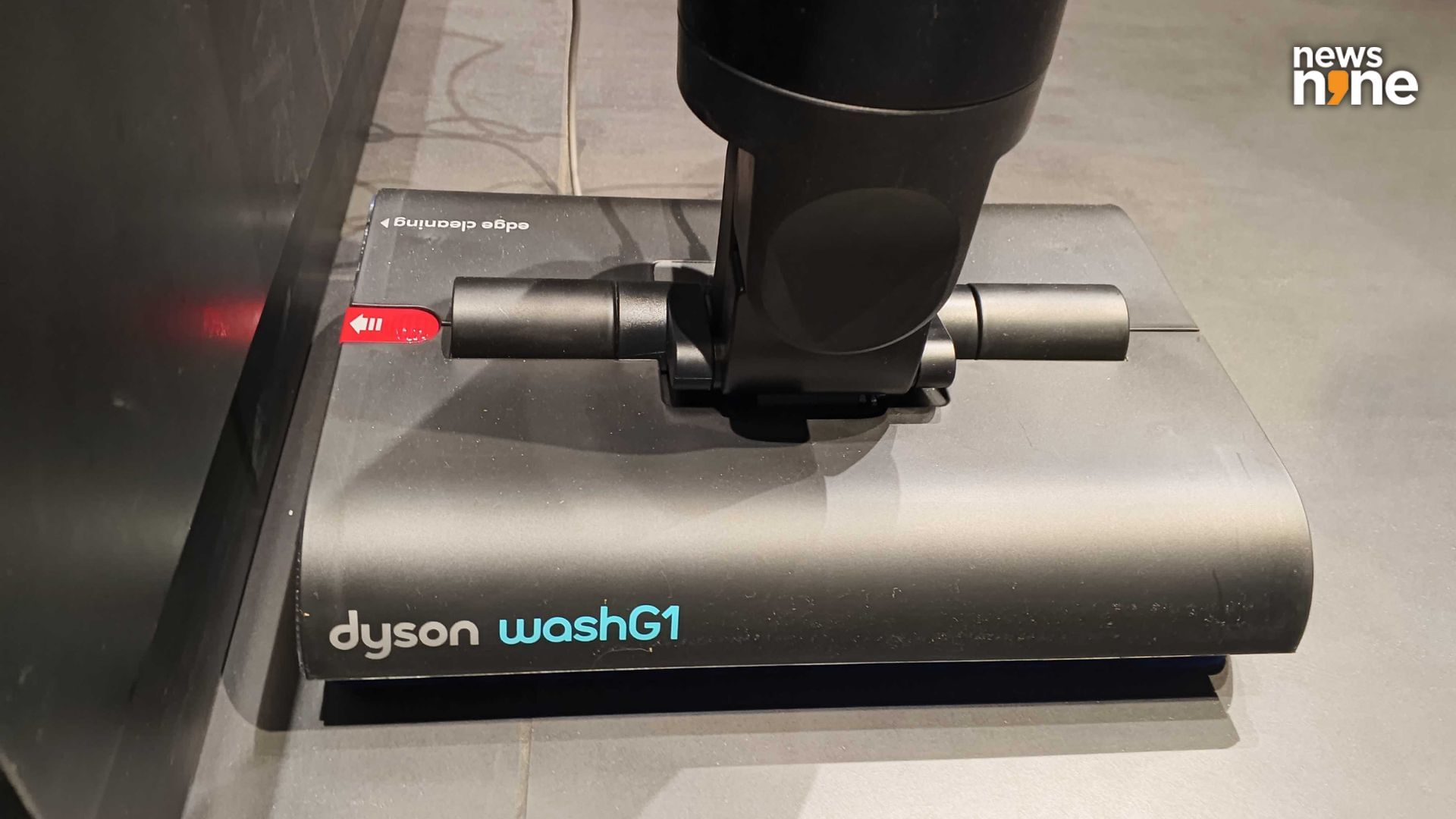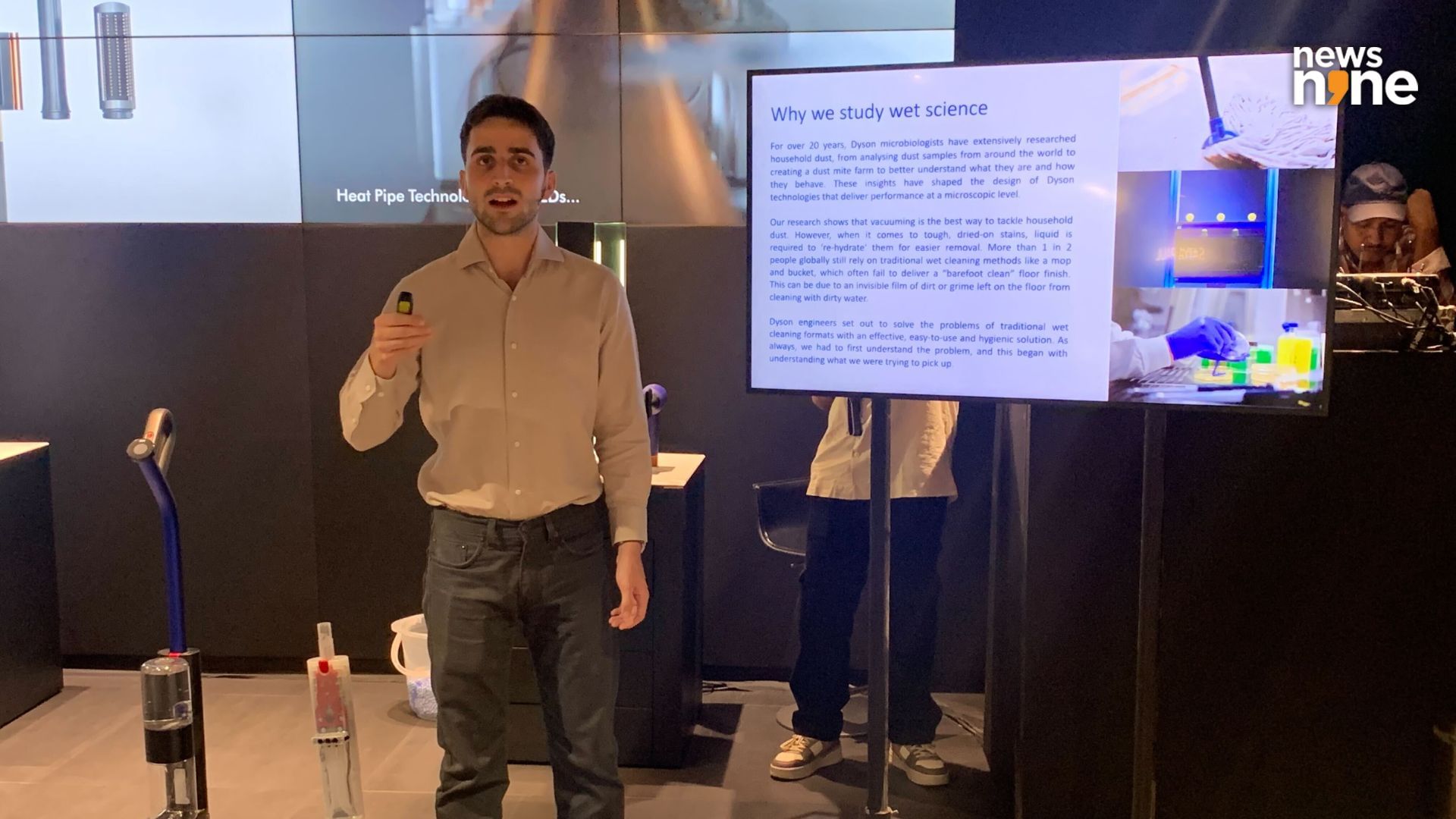New Delhi: Dyson announced the results of its first Global Wet Cleaning study that revealed the shortcomings of traditional cleaning methods. Most households in India mop the floors as part of their daily routines, which is unlike other countries such as South Korea or Australia where such wet cleaning only occurs reactively when needed. This is time consuming, and Indians mops, booms and wet cloths more than any other countries in the region. 49 per cent admit that the water is not cleaned between rooms, which results in dirty water being smeared across floors that can do more harm than good.

The Dyson WashG1 counterrotating microfibre rollers. (Image Credit: Aditya Madanapalle).
Dyson Engineer Tim Hare says, “Indians are among the world’s most dedicated floor cleaners—almost 1 in 2 clean their hard floors daily, more than double the global average. But frequency doesn’t guarantee hygiene. Traditional cleaning methods and tools could be spreading dirt and bacteria. Poor cleaning routines don’t just cost time but may also impact health. Using dirty water repeatedly is unhygienic; it promotes the spread of bacteria rather than removing them.”
Dyson’s innovative solutions
When it comes to cleaning products, the survey reveals the demands and requirements of Indians, who are looking for easy maintenance, effortless cleaning, robust construction and a solution that can tackle tough messes. Dyson offers two products for wet cleaning, the WashG1 that uses a pair of counterrotating, absorbent microfibre rollers to clean, with isolated tanks for clean and dirty water, as well as the V12s Detect Slim Submarine, a wet-and-dry cordless vacuum cleaner. We spoke to Tim Hare at the Dyson store in the Select CityWalk mall at Saket, to better understand the technology behind the WashG1.

The mechanism within the counterrotating motors from an engineering prototype. (Image Credit: Aditya Madanapalle).
Our first question was on the waste segregation system, that collects debris, including hair, fibre and dust into a convenient tray for easy disposal. “For the wet waste, we have these microfibre rollers, and the mangle that squeezes out all of that dirty water, and a pump that extracts out dirty water, and segregates into this dirty tank. The second part is dry debris, so we have nylon brushes, that knock off that debris, and deposit in the tray. You can pull out and throw the debris in the waste. The key is to pull out the dirty water so we are always cleaning with fresh water.”
Different Modes and when to use them
The Wash G1 has three hydration modes, along with a MAX setting, the last of which is for stubborn stains. We asked Hare about when to use the different modes. Hare explained, “So we have got three modes. We recommend most of the time using it in the low for fast drying. We understand that different floors have different porosities, for intense stains we have the medium setting. If the floor is really dirty, we recommend the strongest mode. The Max mode is for really tough, dried-up stains. It uses more water to rehydrate the stain for removal.”

Once side of the WashG1 can be used flush against the wall so there are no gaps. (Image Credit: Aditya Madanapalle).
The disinfectant can be loaded directly into the clean water tank. Hare says, “We found in our research that the key to using disinfectant was, you need to remove dirt and the grime first. So, you need to be vacuuming first. You can put the disinfectant in the clean water tank to get rid of bacteria. Make sure you read the manufacturer’s label, if you are using too much or too high a concentration, it can damage or discolour the floor.”
The counterrotating rollers
The WashG1 is not a wet vaccum cleaner, but the V12s Detect Slim Submarine is. We found the pair of counterrotating microfibre rollers really cool, and wanted to understand more about the engineering behind it. Hare explained, “So there are two reasons for this design. The first is pick up. So you can pick up debris and spills in both directions, both forwards and backwards, so that is good for cleaning. The second is for ease of moving back and forth, the torques of the counterrotating motors cancel out each other, so you can smoothly move in any direction, because the counterrotating is balancing the movement.”
